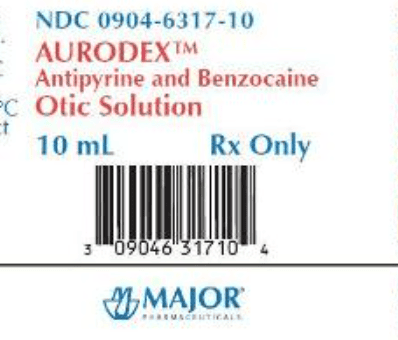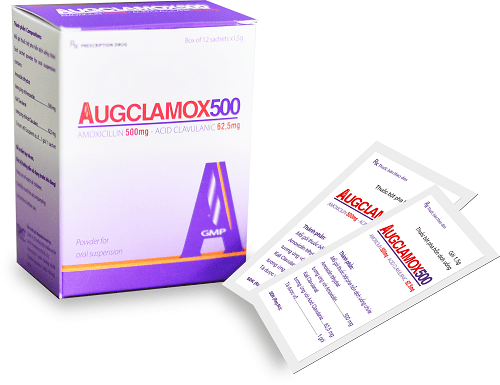This is an automatically translated article.
In the field of otolaryngology, there are quite a lot of ear diseases such as otitis externa, otitis media, perforated tympanic membrane... In which, there is a disease that has a low occurrence rate but is very dangerous. is labyrinthitis.
1. What is labyrinthitis?
The ear has three main parts from the outside in, which is the outer ear, the middle ear and finally the inner ear.
The labyrinth is the main part of the inner ear, made up of the vestibule, semicircular canal, and cochlea. The cavities that are dug in the temporal bone are the bony labyrinth, the membranes that surround the bony labyrinth are called the membranous labyrinth. Thanks to the ability to move the fluid in the labyrinth along with the ability to receive sound from the labyrinthine vestibular nerve fibers, people can hear and keep their balance.
Labyrinthitis is often the result of other diseases in the ear, such as complications of mastoid osteomyelitis or trauma, broken capillaries in the ear, drug poisoning,... it can even be caused by disease. syphilis, mumps, flu.
When the middle ear is infected, it can pass through the two windows and lead to labyrinthitis, especially chronic otitis media with the ability to erode bone.
2. How dangerous is labyrinthitis?
Depending on each labyrinthine syndrome, it can be divided into different levels of danger. Specifically:
Destructive labyrinthitis: This is the most dangerous form of inflammation, because the entire component of the labyrinth is destroyed. Symptoms of the disease include dizziness, severe nausea (especially when changing positions), unsteadiness and frequent falls towards the damaged labyrinth, persistent ringing in the ears with great intensity, impaired hearing. gradually decreased until the ear was completely deaf. In addition, the disease can also cause nystagmus, high fever accompanied by signs of meningitis. Irritant labyrinthitis: This is also a case of inflammation of the entire labyrinth, but at a mild level, the labyrinth has not been completely destroyed. In this case, the patient also presents with the same symptoms as the destructive labyrinthitis, but in a milder form. Hearing loss begins to fade, sometimes dizziness, but it is possible to recover completely if treated in time. Labyrinthitis can be the causative agent of meningitis or vice versa. Whether severe or mild, labyrinthitis also has a great impact on the patient's life, at worst, deafness in one or both ears.
Purulent labyrinthitis is when the labyrinth becomes infected by bacteria in the inner ear. The cause of purulent labyrinthitis is often due to severe otitis media, purulent meningitis or trauma to the labyrinth, leading to the spread of bacteria into the inner ear. Symptoms of purulent labyrinthitis are dizziness, nausea, pain and tinnitus, fever... People with purulent labyrinthitis, if not treated promptly, may become deaf and lose vestibular function. .

Viêm mê nhĩ có thể dẫn đến triệu chứng chóng mặt.
3. Diagnosis and treatment of labyrinthitis
The basic steps for diagnosing labyrinthitis are as follows:
The first step in diagnosing labyrinitis is when dizziness, loss of balance, impaired hearing, or a combination of symptoms of inflammation occur. middle ear level. Your doctor may order a CT scan of the temporal bone to determine the erosion of the labyrinthine bone and look for complications from acute otitis media or mastoiditis. If the patient has additional symptoms of meningitis or brain abscess, it is necessary to have an MRI test or a lumbar puncture and perform a blood culture. Treatment of labyrinthitis:
Purulent labyrinthitis can be treated by using antibiotics that penetrate the meninges well, such as ceftriaxone into the vein. The drug indications will then be flexibly adjusted by the doctor according to the results of the bacterial culture. Sometimes a ventilation tube is needed to drain pus from the middle ear or right to perform mastectomy. Labyrinthitis due to acute otitis media is mainly treated by making an incision in the tympanic membrane followed by antibiotics or sedation. In this case, no mastectomy or direct manipulation of the labyrinth is required. Labyrinthitis due to chronic mastoiditis will require labyrinthine drilling and total mastoidal hollowing. Labyrinthitis caused by acute mastoiditis requires mastoid surgery and continued antibiotic therapy. In severe cases, when surgical methods are not effective, it is necessary to drill the labyrinth. In fact, the treatment of labyrinthitis if delayed will cause a lot of complications. Up to this point, not only makes treatment more difficult, but also directly affects the patient's health. Therefore, as soon as the patient notices abnormal signs in the ear, such as pain, ringing, ear discharge, etc., the patient should go to a reputable medical facility for timely examination and diagnosis.
Currently, the ENT specialist - Vinmec International General Hospital is one of the prestigious addresses, trusted by a large number of customers in examining and treating common ENT diseases, tumors. head, face, neck, congenital malformations in the ENT region by common surgical methods such as surgery, microscopic or endoscopic tympanic patch, fistula removal, Bondy surgery, nasopharyngeal aerosol, injection Not only has a system of modern facilities and equipment, Vinmec is also a place to gather a team of experienced doctors and nurses who will greatly assist in the diagnosis. diagnose and detect early signs of abnormality of the patient's body. In particular, with a space designed according to 5-star hotel standards, Vinmec guarantees to bring patients the most comfort, friendliness and peace of mind during the examination and treatment at the Hospital.
Please dial HOTLINE for more information or register for an appointment HERE. Download MyVinmec app to make appointments faster and to manage your bookings easily.













